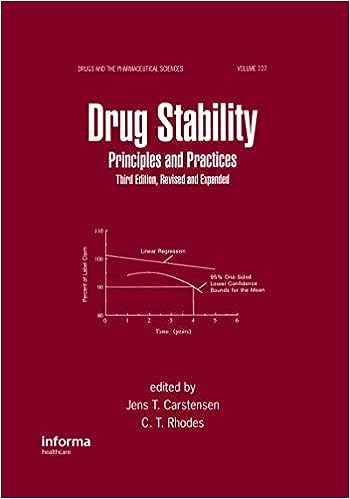Establishing Correlation Between Accelerated and Real-Time Stability Data
Establishing a correlation between accelerated and real-time stability data is crucial to predict a product’s stability behavior over its intended shelf life more rapidly. This correlation helps pharmaceutical manufacturers make informed decisions, set appropriate shelf life estimates, and ensure product quality and safety. In this discussion, I’ll guide you through the steps to establish a correlation between accelerated and real-time stability data.
Understanding Accelerated and Real-Time Stability Testing
1. Accelerated Testing: Conduct stability studies under elevated temperature and humidity conditions to induce rapid degradation.
2. Real-Time Testing: Conduct stability studies under actual storage conditions over the
Designing the Study
1. Selecting Conditions: Choose accelerated conditions that promote degradation similar to what occurs over time.
2. Time Points: Determine accelerated stability study time points that correspond to key time points in real-time testing.
Data Collection
1. Parallel Testing:
Run accelerated and real-time studies simultaneously, collecting data at corresponding time points.2. Analytical Methods: Use consistent analytical methods for both accelerated and real-time testing to ensure data comparability.
Data Analysis
1. Statistical Analysis: Employ statistical techniques to assess the relationship between accelerated and real-time data.
2. Regression Analysis: Use regression models to establish a mathematical correlation between the two data sets.
Factors to Consider
1. Degradation Mechanisms: Ensure that degradation mechanisms under accelerated conditions mimic those occurring in real-time.
2. Kinetic Models: Consider kinetic models that describe the relationship between accelerated and real-time degradation rates.
Validation and Verification
1. External Data: Validate the established correlation with external stability data or historical data.
2. Verification Studies: Conduct verification studies to confirm that the correlation remains consistent over time.
Reporting and Documentation
1. Clear Presentation: Present the correlation equation, statistical analysis, and validation results in stability study reports.
2. Rationale: Provide a scientific rationale for the correlation, explaining the relevance of accelerated conditions to real-time behavior.
Regulatory Submission
1. Regulatory Approval: If shelf life estimates are based on accelerated data, provide a comprehensive submission justifying the correlation.
2. Transparency: Be transparent with regulatory authorities about the correlation methodology and supporting data.
Conclusion
Establishing a correlation between accelerated and real-time stability data is essential for efficiently predicting product stability over its shelf life. By designing the study carefully, collecting consistent data, analyzing the relationship, and validating the correlation, pharmaceutical manufacturers can confidently use accelerated data to make informed decisions about shelf life and ensure product quality and safety.
